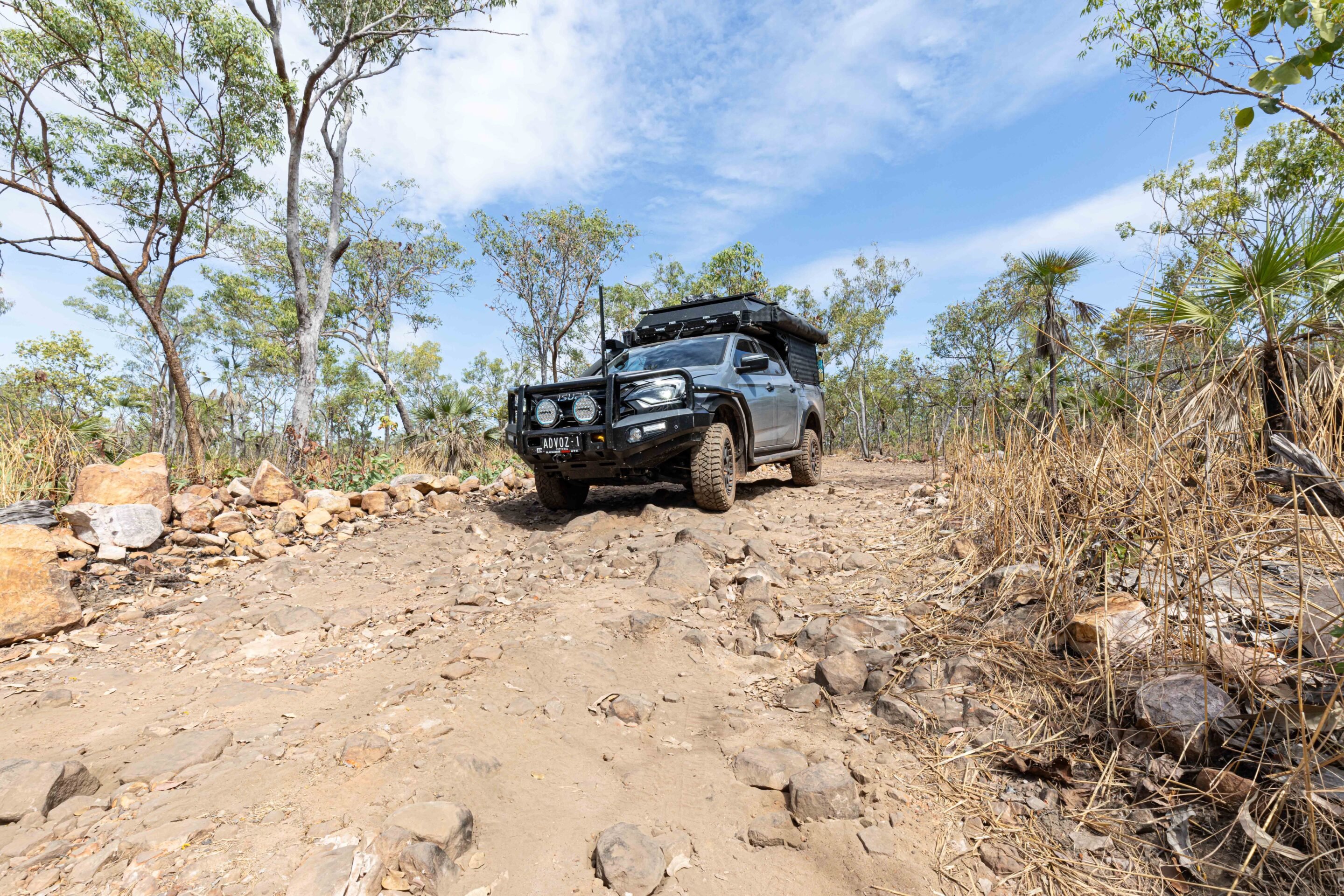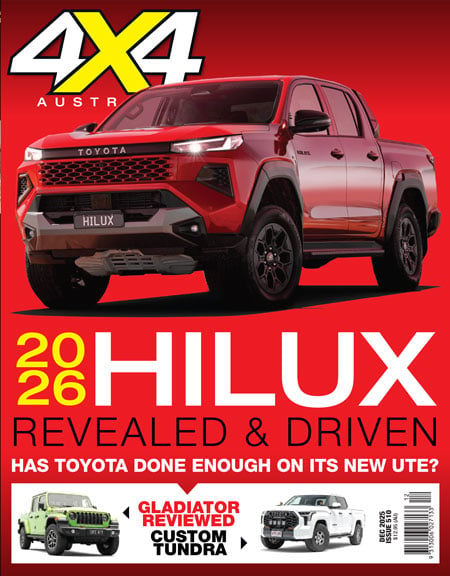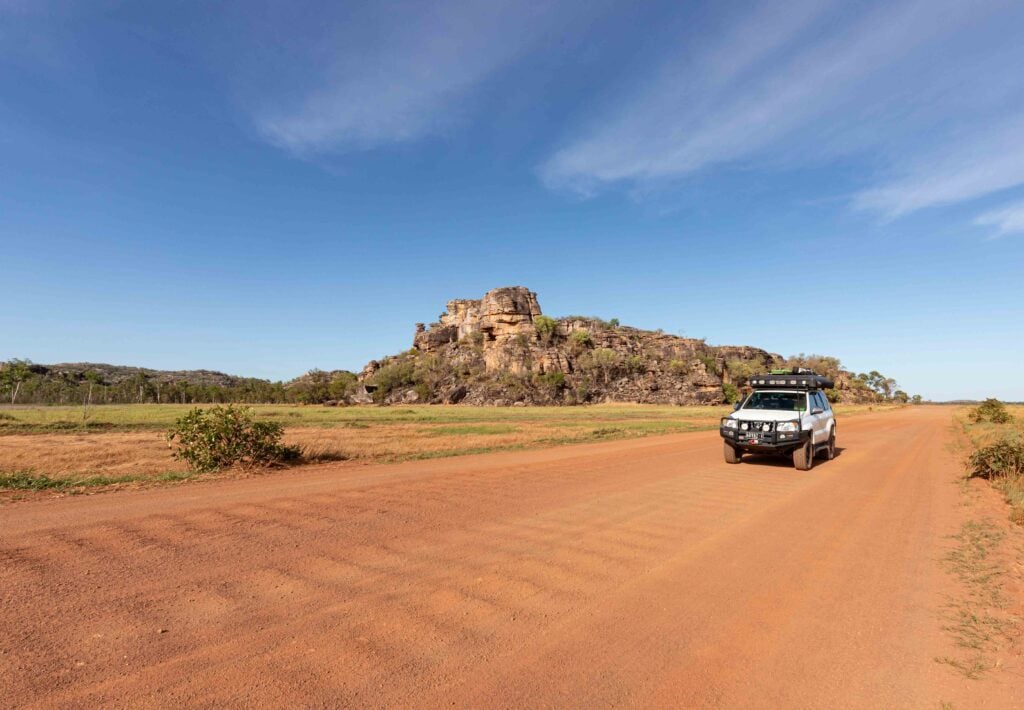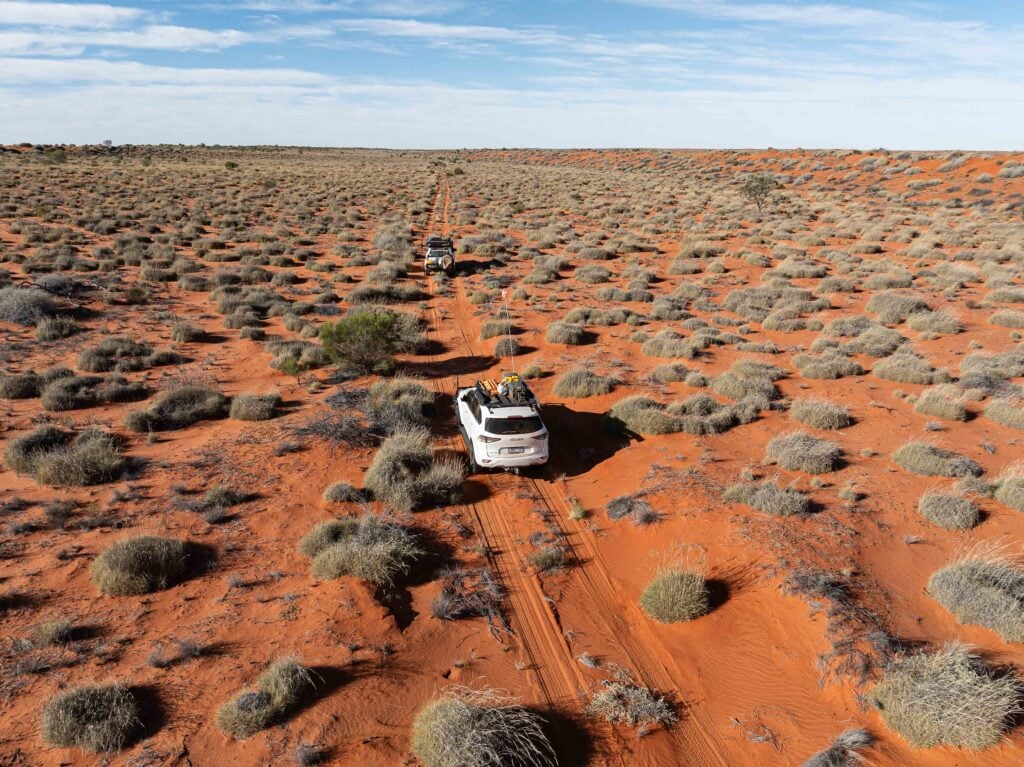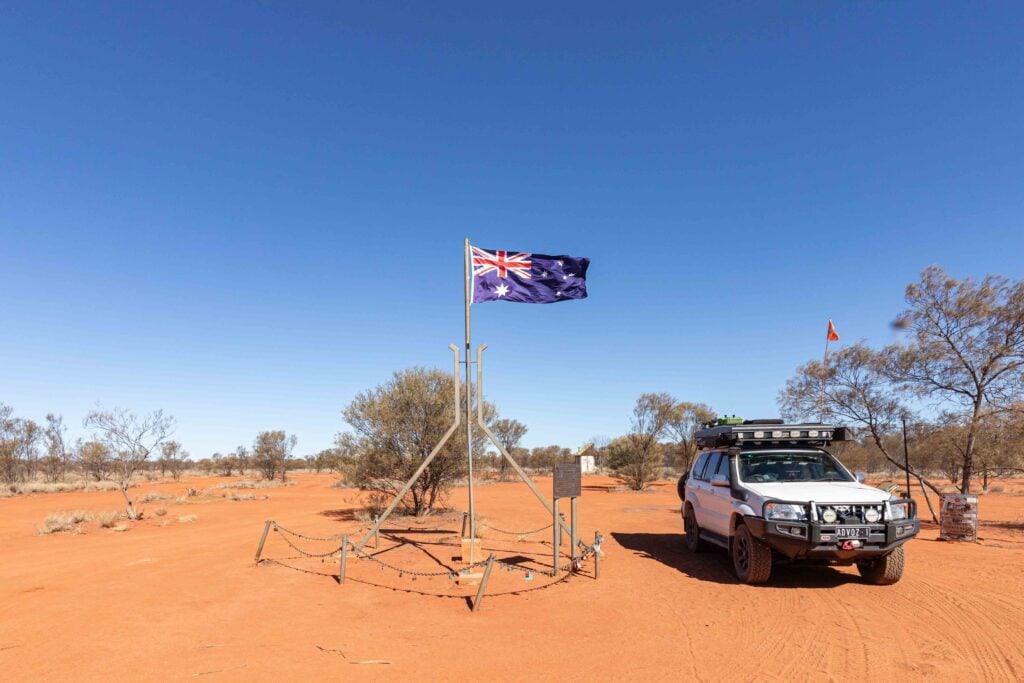Most people think they know Litchfield National Park. Just over an hour south of Darwin, it’s a Territory institution – a playground of waterfalls, safe swimming holes and magnetic termite mounds that features on almost every NT itinerary.
Ask the average traveller what Litchfield means to them and you’ll hear the same names repeated: Florence Falls, Buley Rockhole, Wangi Falls, Tolmer Falls. And they’re right – those spots are magic. But what if I told you there’s a side to Litchfield that doesn’t make the brochures? A part of the park that requires a key to enter, where the crowds don’t follow, where campsites are limited to just a handful, and you can literally roll out of your swag into your own private swimming hole.
That’s Central Valley – a 4×4-only pocket of paradise, recently opened to the public, fiercely loved by locals and, in my mind, one of the best new camping destinations in the Top End.
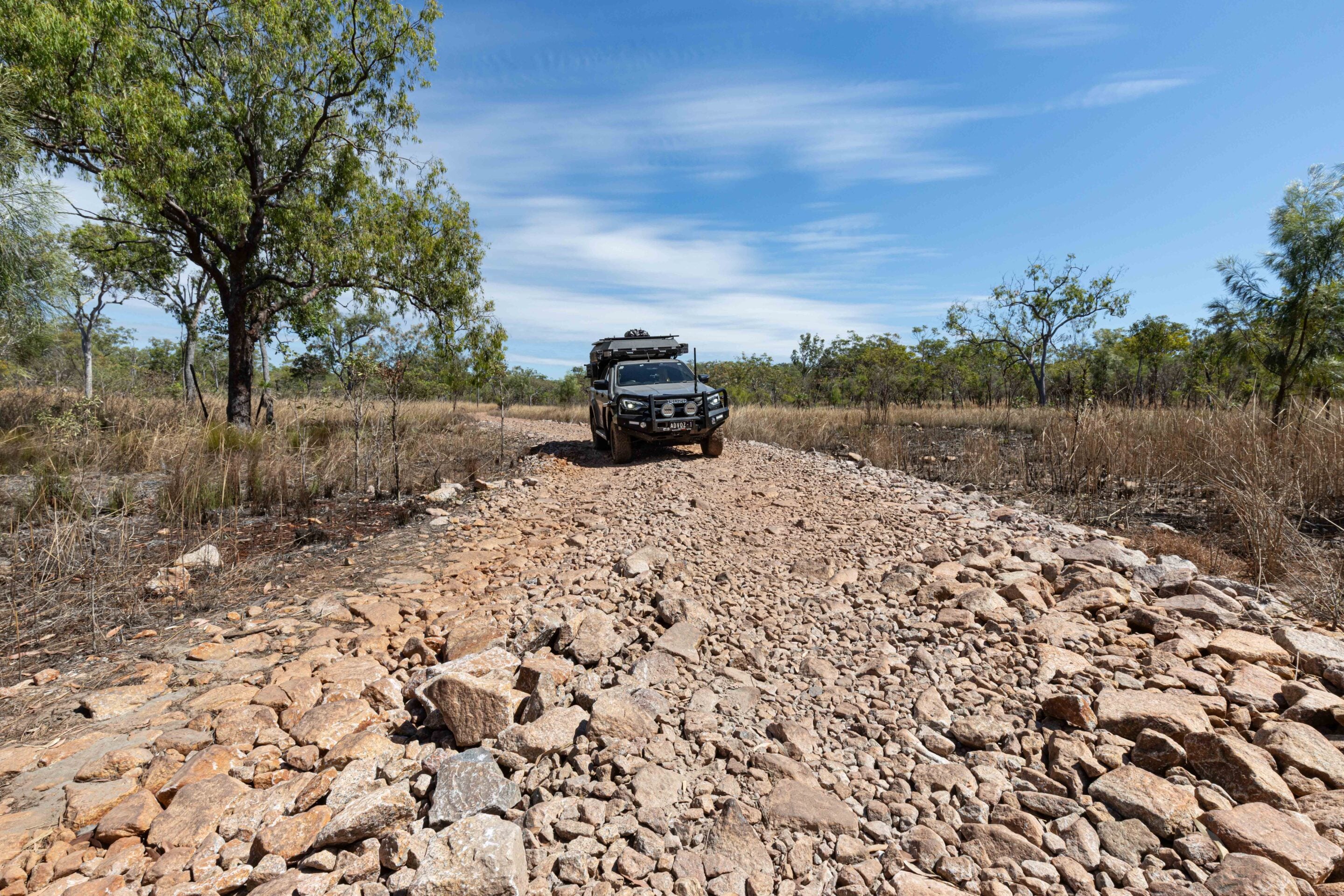
Central Valley access: Keys, permits and 4×4 needs
I’ve explored plenty of national parks around the country, but Central Valley was the first time I’d needed to collect a key from Parks and Wildlife before heading in.
You book online through the NT Parks website, then pick up the key from either the permits office in Palmerston, Territory Wildlife Park in Berry Springs, or by prior arrangement from the NT Parks office in Katherine. You’ll need to show ID and pre-authorise $250 on a credit card before signing out the key.
There’s something old-fashioned about it. In a world where everything’s gone digital, here you are signing your name in a logbook and pocketing a physical key. You’ll need it to unlock the heavy steel gates that mark the start of the Central Valley access tracks.
The key system might seem like a hassle, but it’s actually a stroke of genius. It limits numbers, prevents the campground from being overrun, and preserves that special feeling of discovering a rare oasis. It also stops ghost campers. You’re not just turning off the highway onto another tourist track – you’re unlocking something most people will never experience. And here’s a tip: you can return the key to the Parks office at Batchelor on your way out, which is handy if you’re looping back north.

The Lost City: Litchfield’s top 4×4 detour
If you’re making the effort to grab the key and bump your way into Central Valley, you’d be mad not to add the Lost City to your itinerary.
Sitting just off the same 4×4 access track, this collection of towering sandstone pillars feels like stumbling across an ancient civilisation hidden in the scrub. Of course, it’s not the ruins of a long-lost civilisation – it’s a natural sandstone formation shaped by millions of years of wind and water erosion. The result is a sprawling maze of stone towers, narrow passages and sheer cliffs that eerily resemble crumbling city walls. Time your visit right and the low sun sets the rock ablaze in deep oranges and reds, creating an otherworldly atmosphere.
The track to the Lost City is the same one you’ll take into Central Valley – rough, slow-going and strictly 4×4 only. It’s about a 10km detour, with rocky sections and washouts that may call for low-range and careful tyre placement. Caravans and camper trailers are definitely a no-go.

Once you pull up at the small car park, you’re free to wander among the formations. There aren’t formal walking tracks – it’s more about carefully picking your way between the sandstone towers and soaking it all in. The silence is profound, broken only by the rustle of a wallaby or the calls of cockatoos overhead.
Kids will love scrambling through the nooks and crannies, while photographers could spend hours chasing the play of light and shadow across the stone. Aim for early morning or late afternoon, when the colours are at their richest and the whole place feels even more mystical.
The Lost City is the perfect warm-up or wind-down for Central Valley. It’s a short detour that adds another layer to your Litchfield adventure – one minute you’re crawling through rocky 4×4 tracks, the next you’re standing in the middle of a natural wonder that looks like it belongs on another continent. Best of all, it’s quiet. Like Central Valley, the Lost City doesn’t see the tour bus crowds. It’s strictly for 4×4 travellers, which keeps the numbers down and the experience all the richer.
When planning your trip to Central Valley, allow an extra couple of hours to explore the Lost City. It’s a reminder of just how diverse Litchfield is – not just waterfalls and swimming holes, but geology on a grand, almost surreal scale.
Central Valley track: What to expect
The sealed road through Litchfield takes you past the well-known attractions, but as soon as you swing onto the Lost City track, the game changes. The bitumen ends, the corrugations begin, and you’re firmly in 4×4 country.
From the moment you leave the gate behind, the drive itself becomes part of the adventure. The track isn’t the toughest in the NT by any stretch, but it’s rough enough to demand respect. Expect washouts, deep ruts, rocky sections and a couple of creek crossings. If you’re towing a camper trailer, you’ll need to know your rig and your clearances. Caravans? Forget it – they’re not permitted, and for good reason.
Campground 1, in particular, is only accessible to high-clearance 4x4s. This is low-range country – the sort of track where dropping your tyre pressures makes all the difference. If you’re running a long wheelbase or low sidesteps, be prepared for a few belly scrapes.
By comparison, Campgrounds 2 and 3 are easier to reach, though you’ll still want proper 4×4 gear under you. They’re a good choice if you’re not keen on testing your bash plates but still want that secluded bush-camp feel.
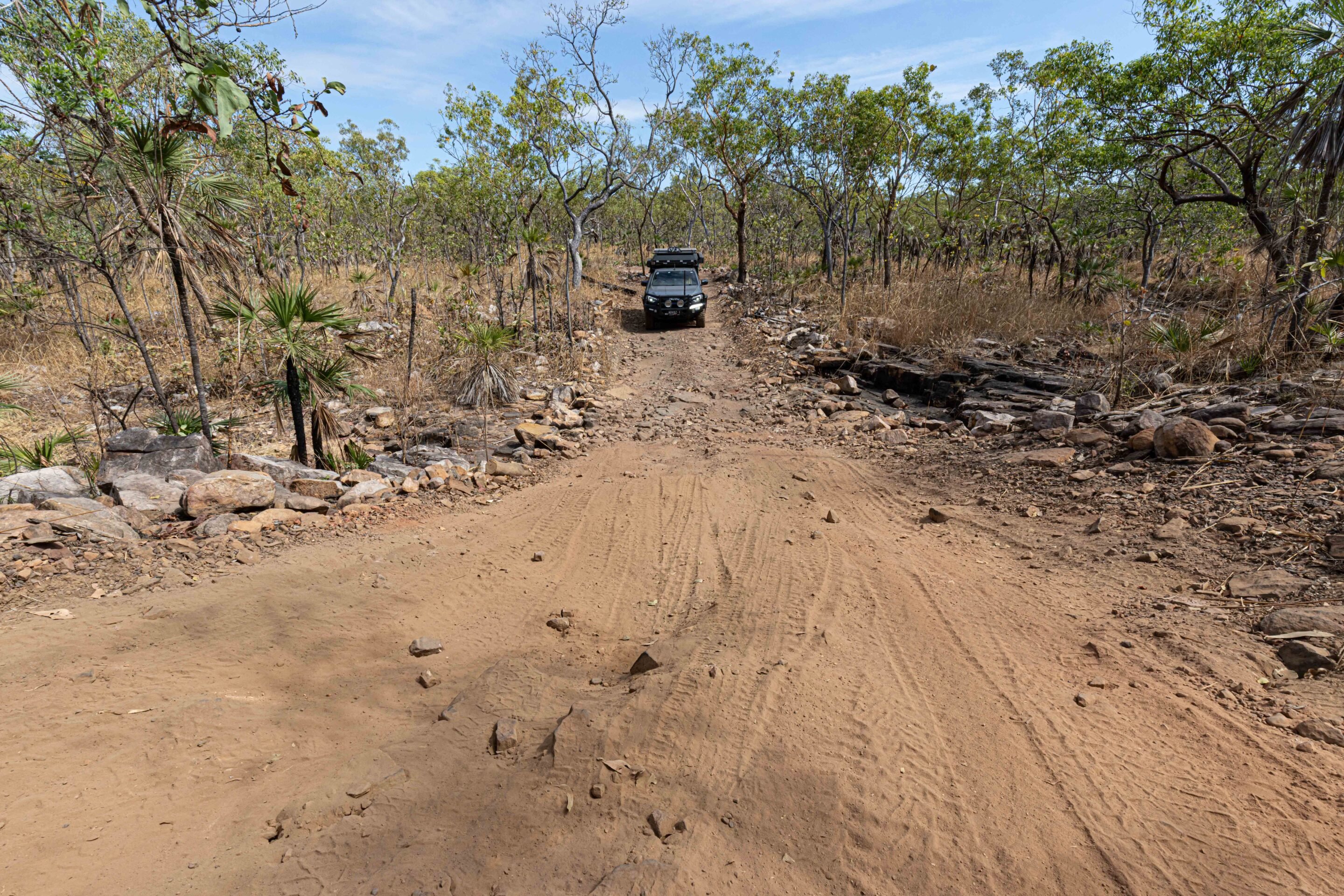
Central Valley campgrounds guide
Central Valley is neatly divided into three campgrounds, with a total of just 32 sites. That’s it – 32 campsites across a massive valley, which means space, privacy and the kind of quiet you’ll never find at Florence Falls.
Campground 1: High-clearance 4×4 access
Campground 1 is the toughest to reach, but it’s also the most rewarding once you get there. The sites are small, shaded and strung along the East Reynolds River, with several backing directly onto the creek. That means private plunge pools right at camp – picture stepping out of your swag or off-road camper at sunrise, boiling the billy, and sliding straight into crystal-clear water without another soul in sight.
This is the campground for purists. No caravans, no big groups – just a handful of hardy travellers with well-set-up rigs. If you’re chasing solitude, this is the pick.
Campground 2: Family-friendly camping
A short drive further in, Campground 2 is more forgiving. The sites are larger, more spread out, and the river widens here into broad, shallow swimming holes perfect for kids. There’s still enough depth for adults to cool off, but the sandy-bottomed shallows are safe for little ones to splash about under supervision.
You’ll also see more off-road camper trailers here. If you’ve got a family rig and want a balance between adventure and comfort, Campground 2 strikes it beautifully.
Campground 3: Shady, easy access
Campground 3 is the most accessible of the three, but that doesn’t mean it lacks character. Tucked under big paperbarks and eucalypts, the sites are shady, private and only a stone’s throw from the river. If you’re not up for the rougher track into Campground 1 but still want the Central Valley experience, Campground 3 is ideal.
Each campground offers the same basic facilities: pit toilets, fire pits and the occasional picnic table. There are no showers, no water taps and no generators. It’s bring-your-own everything – exactly as it should be.
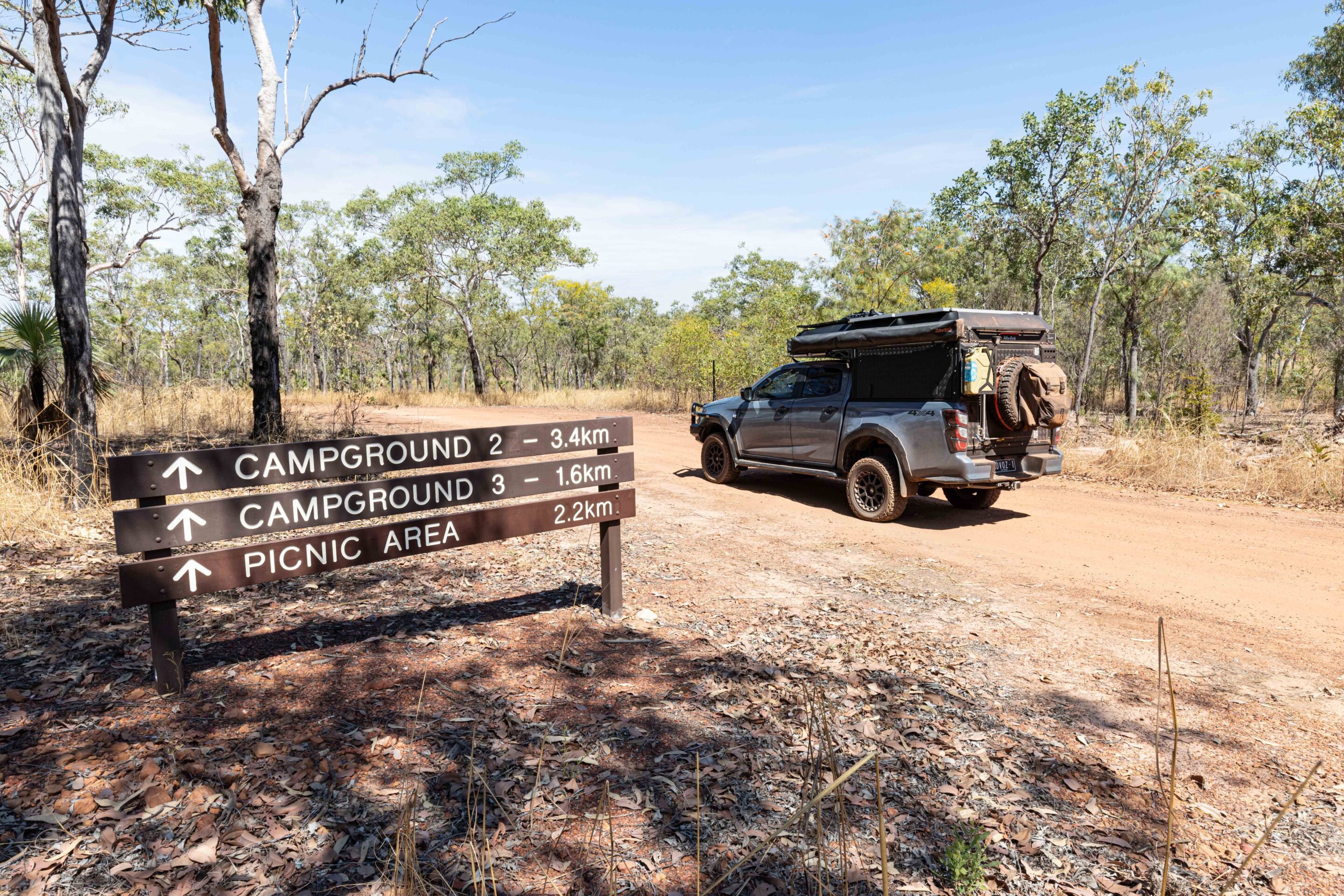
Central Valley swimming: Croc-free spots
The East Reynolds River is the real star here. Unlike many other Top End creeks where saltwater crocodiles are a constant concern, Central Valley’s swimming holes are croc-free during the dry season.
That’s a game-changer – no second-guessing before diving in. Each campground has its own safe swimming spots, from sandy-bottomed pools where you can sit waist-deep with a cold drink to deeper rockholes where you can stretch out and float.
The water is cool, clear and utterly irresistible in the heat of the NT dry. Late afternoons are pure magic – the paperbarks glowing gold, dragonflies skimming the surface and kookaburras calling through the valley. At night, the pools reflect the stars, and if you’re lucky, you might even hear the splash of a freshwater fish breaking the surface.
Central Valley wildlife
Camping in Central Valley means sharing the space with the locals – and not just the Territorians who’d rather keep it secret.
In the early mornings, agile wallabies graze on the edges of camp, while goannas meander through the pandanus. The birdlife is outstanding – I spotted rainbow bee-eaters, azure kingfishers and a noisy squadron of red-tailed black cockatoos overhead.
At night, the bush comes alive. The eerie wails of bush stone-curlews echo across the valley, sugar gliders dart between the trees, and if you’re lucky, you might spot a bandicoot scurrying through the undergrowth. For wildlife photographers, this place is a goldmine.
Country and culture in Central Valley
It’s important to remember that Central Valley, like all of Litchfield, sits on Limilngan-Wulna and Koongurrukun Country. This land has been cared for and respected for thousands of years, long before national parks were marked on maps.
The East Reynolds River, the surrounding escarpments and even the campsites themselves all form part of cultural landscapes with deep significance. Parks and Wildlife, working with Traditional Owners, manage Central Valley carefully to protect both its natural and cultural values. As travellers, the best way to show respect is to tread lightly, follow the rules and leave no trace.
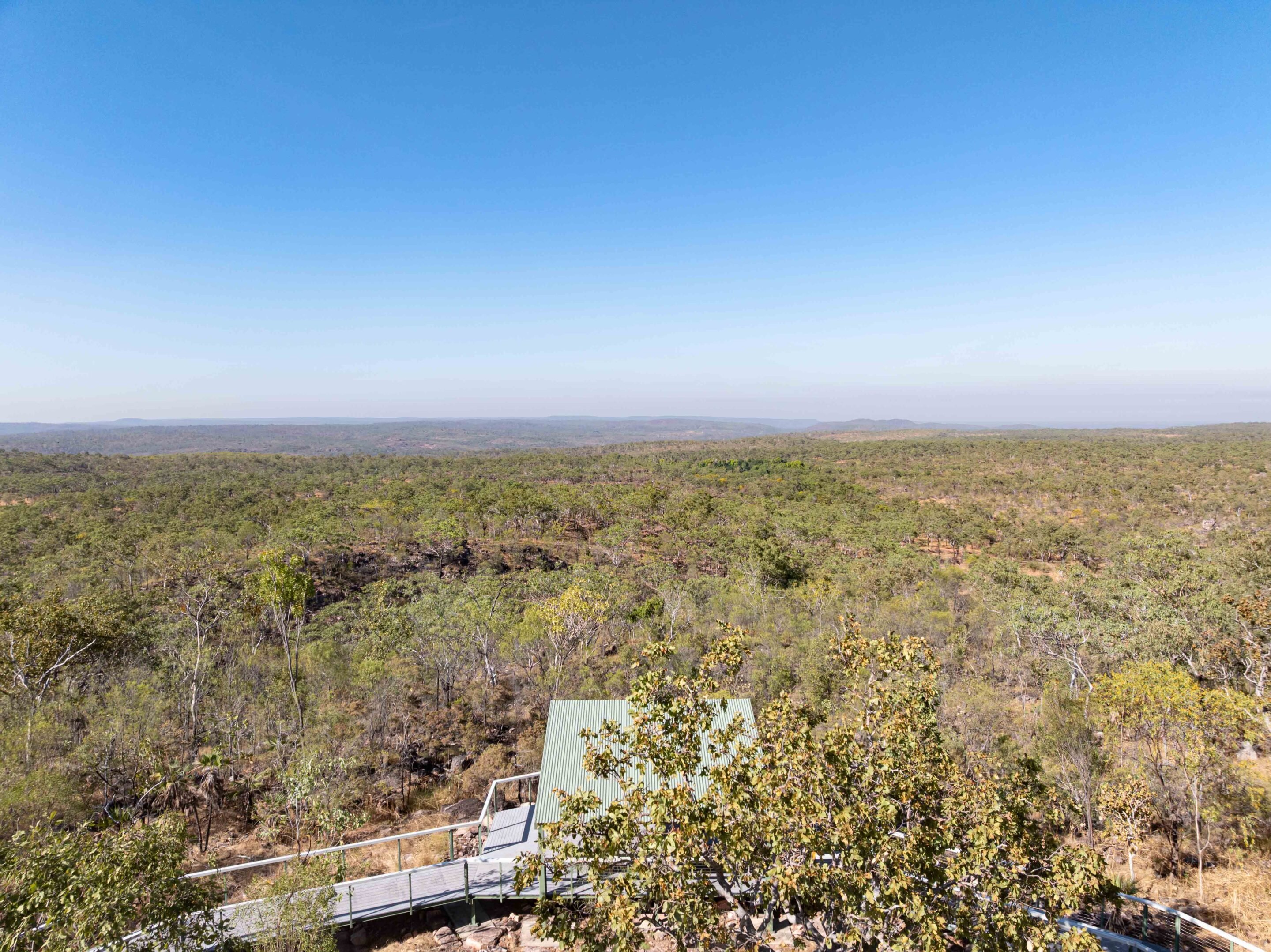
Why locals love Central Valley
Talk to anyone from Darwin who’s spent time in Central Valley and you’ll hear the same thing: don’t tell too many people about it!
And it’s easy to see why. For years, Darwin locals have treated Litchfield as their backyard getaway, but with the main falls and swimming holes often packed with tourists, Central Valley offers something different – space, peace and the feeling you’ve got a corner of the park to yourself.
The key system keeps numbers down, and the limited campsites mean it’ll never be overrun. It’s become the weekend escape of choice for those in the know. Outside school holidays, bookings are usually straightforward, and you might end up sharing a campground with just a handful of others.
Why Central Valley stands out
For me, Central Valley sums up everything I love about four-wheel driving in the NT.
It’s not about conquering extreme tracks or covering massive distances – it’s about finding places the bitumen doesn’t reach, where you can still feel that sense of discovery, and where the effort to get there pays off in spades.
Sitting by the East Reynolds River with a fire crackling and the night sounds of the Top End all around, I felt like I’d stumbled onto something special. And in many ways, I had – a part of Litchfield the locals would rather keep secret, a place where you need a key to enter and where the reward is peace, solitude and endless swimming holes. Yes, Litchfield is famous for its waterfalls, but the real treasure might just be hidden in its Central Valley.

Fast facts
- Where: Central Valley, Litchfield National Park, NT
- Access: 4×4 only via the Lost City track. Key required.
- Bookings: Online through NT Parks – nt.gov.au/parks/find-a-park/Litchfield-national-park/central-valley
- Keys: Collect from the permits office in Palmerston, Territory Wildlife Park in Berry Springs, or the NT Parks office in Katherine (by prior arrangement). Keys can also be returned at Batchelor.
- Season: Dry season only (May–Nov). Closed during the wet – check NT Parks for updates.
- Facilities: Pit toilets, fire pits, picnic tables. No water, showers or power.
- Campsites: 32 sites across three campgrounds. Unpowered.
Ideal set-up
- Vehicle: A high-clearance 4×4 is essential. Low range is handy, and a snorkel’s a bonus if water levels rise early in the season.
- Tyres: Drop pressures to around 22–24psi for the rougher sections. Carry a compressor to reinflate once you’re back on the blacktop.
- Towing: Off-road camper trailers are fine if you’re confident, but caravans aren’t permitted.
- Camping gear: Swags, rooftop tents or compact setups work best. Sites aren’t huge, so leave the annex walls at home.
- Supplies: Bring all food, water and firewood. There are no bins, so pack it in and pack it out.
We recommend
-
 Explore NT
Explore NTPlanning your 4x4 trip to Arnhem Land: Essentials, routes and advice
A journey into Arnhem Land is more than just a four-wheel drive trip
-
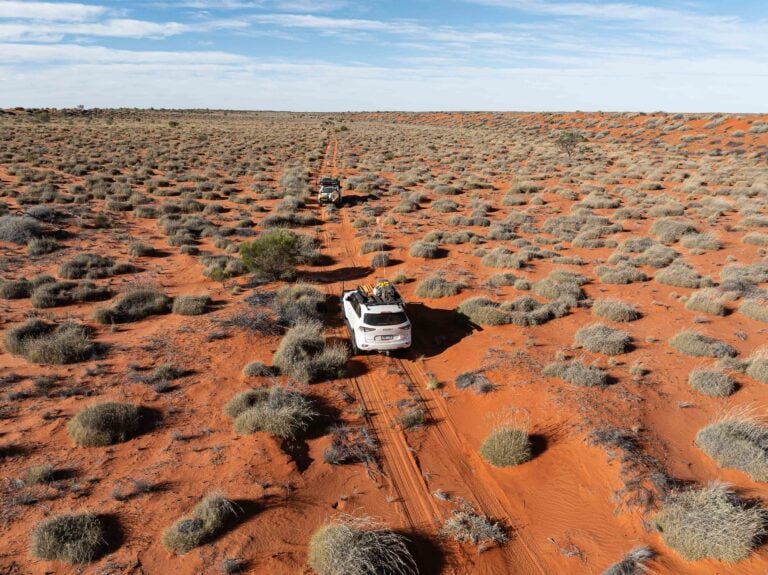 Explore NT
Explore NTDriving the Colson Track: A remote Simpson Desert adventure
A journey through the heart of the Simpson Desert along the spectacular and rewarding Colson Track
-
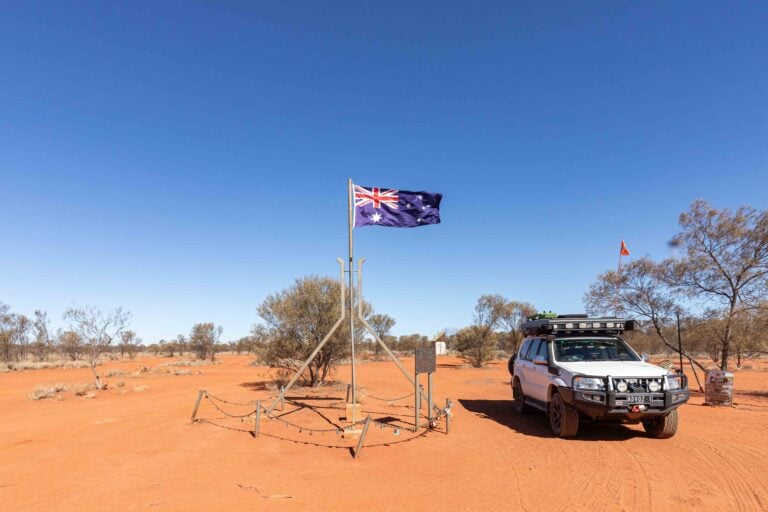 Explore NT
Explore NTThe Red Centre: 4x4 journey to the centre of Australia
The Red Centre presents countless adventures for 4WD tourers

